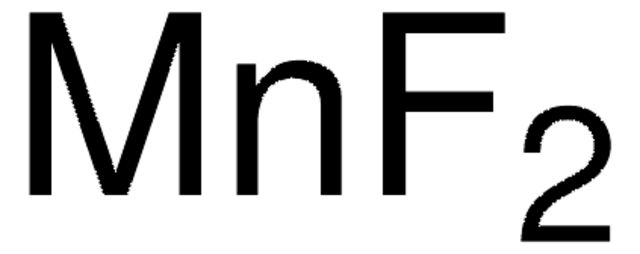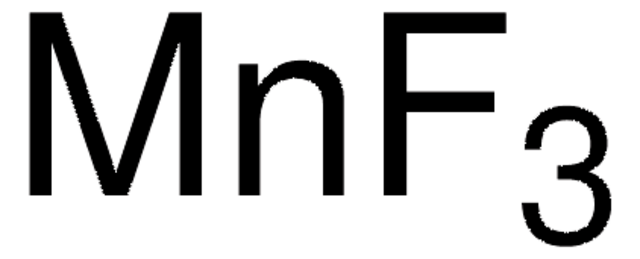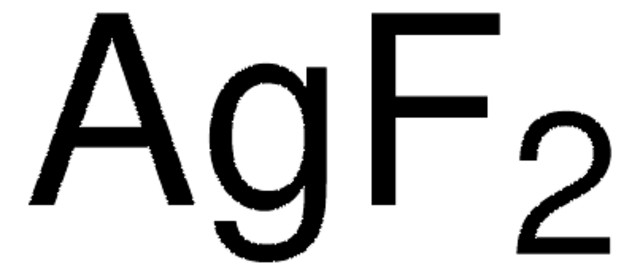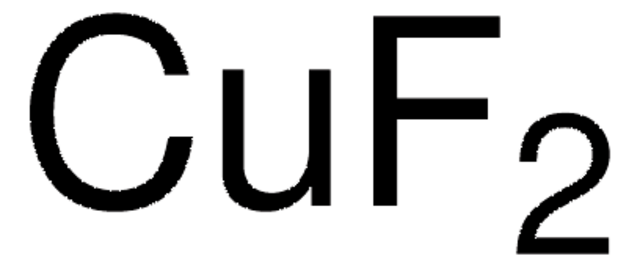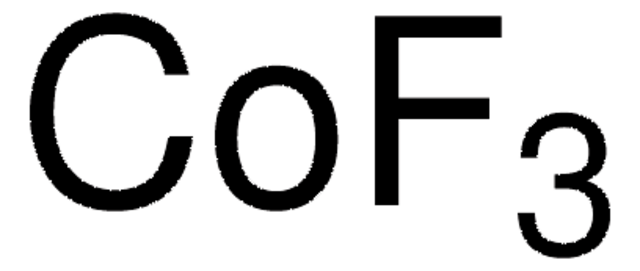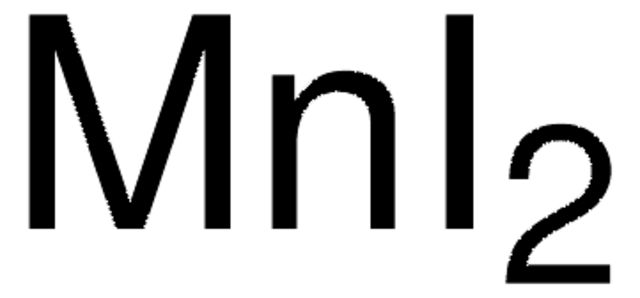771619
Manganese(II) fluoride
≥99.95% trace metals basis
Synonym(s):
Manganese bifluoride, Manganese difluoride, Manganous fluoride
About This Item
Recommended Products
grade
anhydrous
Assay
≥99.95% trace metals basis
form
powder
impurities
≤500.0 ppm Trace Metal Analysis
mp
856 °C (lit.)
density
3.98 g/mL at 25 °C (lit.)
application(s)
battery manufacturing
SMILES string
F[Mn]F
InChI
1S/2FH.Mn/h2*1H;/q;;+2/p-2
InChI key
CTNMMTCXUUFYAP-UHFFFAOYSA-L
Looking for similar products? Visit Product Comparison Guide
Application
Signal Word
Warning
Hazard Statements
Precautionary Statements
Hazard Classifications
Acute Tox. 4 Dermal - Acute Tox. 4 Inhalation - Acute Tox. 4 Oral - Eye Irrit. 2 - Skin Irrit. 2 - STOT SE 3
Target Organs
Respiratory system
Storage Class Code
11 - Combustible Solids
WGK
WGK 3
Flash Point(F)
Not applicable
Flash Point(C)
Not applicable
Choose from one of the most recent versions:
Already Own This Product?
Find documentation for the products that you have recently purchased in the Document Library.
Articles
Lithium-ion batteries represent a group of electrochemical devices used for electricity storage and have attracted a lot of attention in the past two decades due to their portability, rechargeability and low cost.
Our team of scientists has experience in all areas of research including Life Science, Material Science, Chemical Synthesis, Chromatography, Analytical and many others.
Contact Technical Service